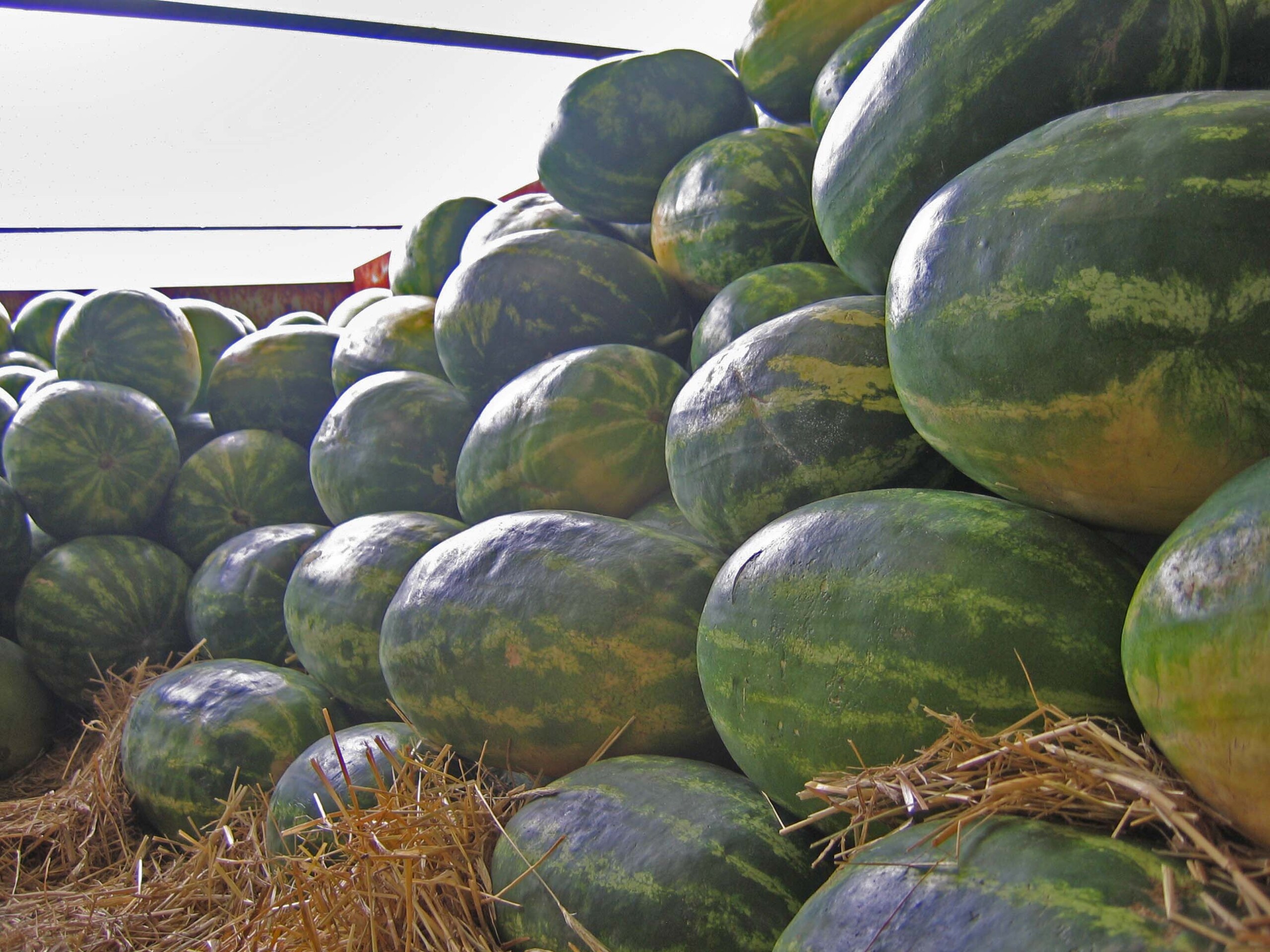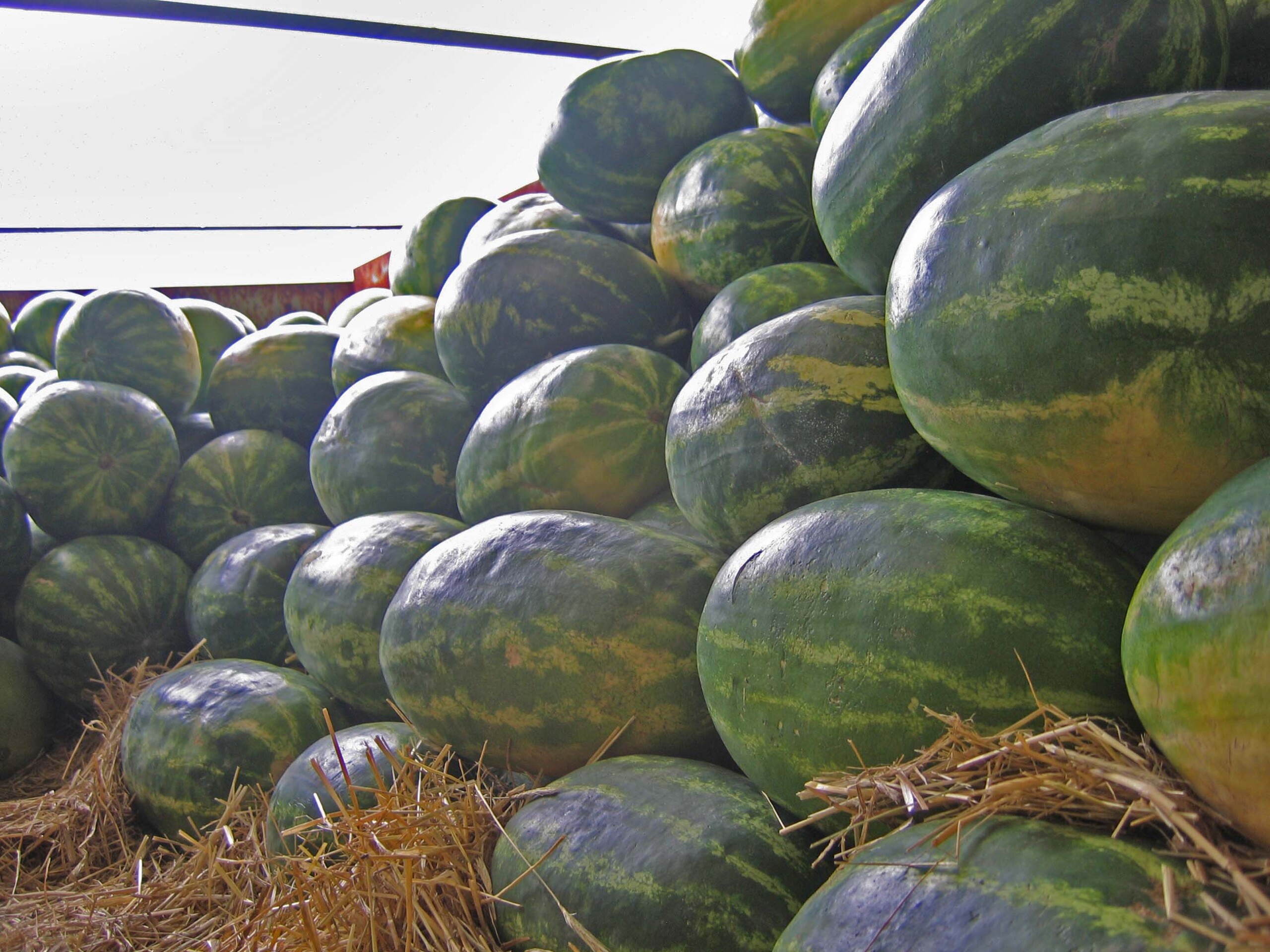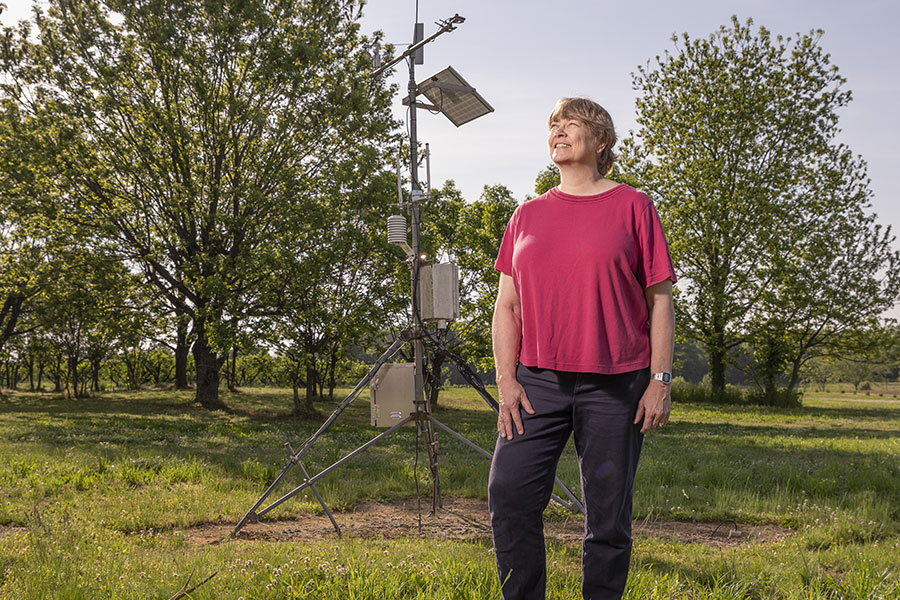The late-season market for Georgia watermelons is typically small, but could be critical for some Georgia farmers affected by a recent hailstorm in south Georgia, according to University of Georgia Cooperative Extension vegetable horticulturist Tim Coolong.
On Tuesday, May 3, a hailstorm hit several south Georgia counties and impacted numerous fields, leaving damaged watermelons in its path.
Coolong estimates that at least 400 acres of watermelons in counties stretching from Colquitt County northeast past Telfair County were impacted by the storm.
“The damage was hit or miss, with some growers being severely impacted, while others a few miles away saw just some high winds,” said Coolong. “To have some fields completely wiped out at this stage in the growing season could be devastating.”
So far, Coolong has heard from about 10 growers who suffered damage to their crops, and the injuries range from minimal plant damage to crops that have been completely destroyed.
For some growers, having undeveloped fruit was beneficial because heavy fruit sets would have been damaged. When the fruit is damaged, often it will continue to grow. However, the fruit will ultimately be unmarketable, so it will have to be removed from the plant to prevent draining resources. In a more moderate case, the hail will only put holes into the watermelon plant leaves. Because the damaged leaves are more vulnerable to pathogens, the grower will then have to take special care of the plant to ensure it does not acquire any diseases throughout the rest of the growing season.
Watermelon’s peak season is during the latter part of June or the first couple of days in July, right before July 4. This peak window comes when watermelons are highly sought after and are very marketable.
According to Coolong, when the Georgia watermelon market tapers off after July 4, other states like Indiana and Delaware then dominate the national market. However, there is a possibility that some of these Georgia growers who suffered significant damage can cash in on the late market.
“It is hard to say how many of our Georgia growers plan on providing watermelons for the late market, but we can expect roughly 1,000 to 1,500 acres to be produced,” said Coolong.
When Georgia growers decide to plant late watermelons — those planted in late April or early May — they will need to spray their plants more frequently for diseases that are more likely to occur, like downy mildew, Fusarium wilt and gummy stem blight. Coolong warns farmers that producing a later crop means a higher risk of losing a crop during the summer.
Planting season usually starts during the beginning of March. Growers who lost their crop to inclement weather a couple of weeks ago have had the option of planting again and testing the late-season market.
Watermelons accounted for more than $134 million in farm gate value in 2014, according to the UGA Center for Agribusiness and Economic Development.
“Unfortunately, there is nothing growers can do to prevent damages like this from happening to their crops,” said Coolong. “Sometimes, it just happens.”
(Kenzie Kesselring is an intern on the UGA Tifton Campus.)



